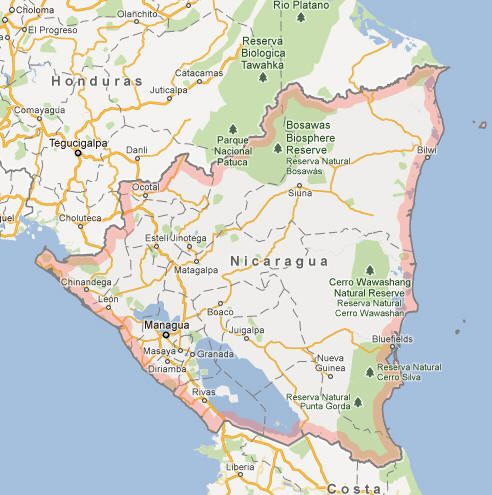Nicaragua Facts
Nicaragua, State of Central America; 130 700 km², 6.5 million residents (2019).Nicaragua is Central America’s largest country and borders in the north to Honduras and in the south to Costa Rica and has coast to the Caribbean in the east and the Pacific in the west. The eastern half of Nicaragua, called the Atlantic Coast, has since 1990 limited self-government. The capital is Managua (1 million residents, 2018).

Country facts
- Republic of Nicaragua / Republic of Nicaragua
- Country abbreviation: NI
- Area: 130 700 km²
- Population (2019): 6.5 million residents
- Capital: Managua
- Main language: Spanish
- State: Republic
- Head of State and Head of Government: Daniel Ortega (President)
- Per capita GDP (2018): US $ 2,029
- GNI per capita (2018): USD 2,030
- Currency unit: 1 córdoba = 100 centavos
- Currency code: NIC
- Country number (telephony): 505
- Internet domain name: ni
- Time difference compared to Sweden: −7
- National Day: September 15 (Independence Day, 1821)
Nature
- Land use: forest (27%), agricultural land (15%), other (58%)
- Highest mountain: Mogotón (2,103 m asl)
- Largest lake: Lake Nicaragua (8,430 km² )
Population
- Population density (2019): 50 residents per km²
- Natural population growth (2019): 1.6%; birth number 21 ‰, death number 5 ‰
- Age structure (2019): 0-14 years (31%), 15-64 (64%), 65- (5%)
- Life expectancy (2019): men 71 years, women 78 years
- Infant mortality (2019): 17 per 1,000 live births
- Population forecast 2050: 8 million residents
- HDI (2017): 0.658 (place 124 of 189)
- Urbanization rate (2018): 59%
- Most populous city (2018): Managua (1 million residents)
Business
- Industry’s contribution to GDP (2017): agriculture (16%), industry (24%), service (60%)
- Exports (2017): US $ 3,819 million
- Main export products: coffee, meat, gold
- Main exporting countries: USA, El Salvador, Venezuela
- Imports (2017): US $ 6,613 million
- Main import products: consumer goods, machinery, oil products
- Main importing countries: USA, China, Mexico
- Railway network: nothing in use
The interior of Nicaragua is dominated by the Central American part of the Cordillarians; Coastal plains are spreading on both sides of this highland. The eastern coastal region is low and swampy. The west has a belt with some 40 volcanoes, some active. In southwestern Nicaragua is a sink with the big lakes Managua and Nicaragua. The eastern parts have a tropical rainforest climate, while the western parts are in the rain shadow and are almost steppe.
The country’s political power is shared between the president and the National Assembly. The president is elected in direct elections for five years. The members of the National Assembly are elected in proportional elections for the same length of time.
Nicaragua’s business is based on agriculture and industry, primarily small-scale manufacturing. Since 1990, a significant privatization of business has been carried out. Large areas are used for the export products coffee, sugar and bananas as well as pasture for steak cows. In recent years, the country’s economy has suffered poorly, much as a result of Nicaragua in 1998 hit by Hurricane Mitch and the collapse of international coffee prices in 2000. A significant portion of the country’s income comes from international aid and in the form of money as guest workers in the United States.
Nicaragua Map














































